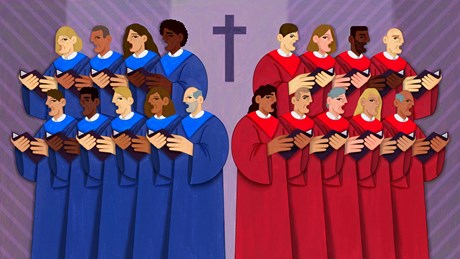A challenging year threatens to divide Christians who have resisted the cultural trend.

The problem is not that people in the church disagree about who to vote for.
The problem is not that people get angry, shoot fiery emails to the pastor, and get into bruising fights with other church members on Facebook. (Though that does happen.)
And really, the problem is not even that some things are suddenly intensely political, though they weren’t before—trusting health experts, saying everyone is created in the image of God, or preaching on a passage of Scripture that mentions the poor.
The problem of polarization, according to the pastors of purple churches struggling to minister to red Republicans and blue Democrats during another divisive election, is that people stop fighting. They part ways. And they sort themselves by political preference.
Polarization makes it seem like unity in Christ can only come after political unity. Polarization makes it seem like partisanship is stronger than the gospel.
“The polarization is so deep now,” said LeRoy Lawson, an Independent Christian Church minister who started preaching in the 1950s, “[that] most churches lean to the Left or lean to the Right and they think only left or right can be true Christians.”
Polarization is a 30 years cultural trend, according to sociologists and political scientists. When Bill Clinton beat George H. W. Bush in the 1992 presidential election, a little more than a third of Americans lived in “landslide counties,” where one of the two candidates won more than 70 percent of the vote. In 2016, when Donald Trump beat Hillary Clinton, more than 6 out of 10 Americans lived in landslide counties. Most people lived surrounded by people who thought just like they did, “clustering,” as sociologist ...
from Christianity Today Magazine
via

.gif)

.gif)

.gif)
.gif)
